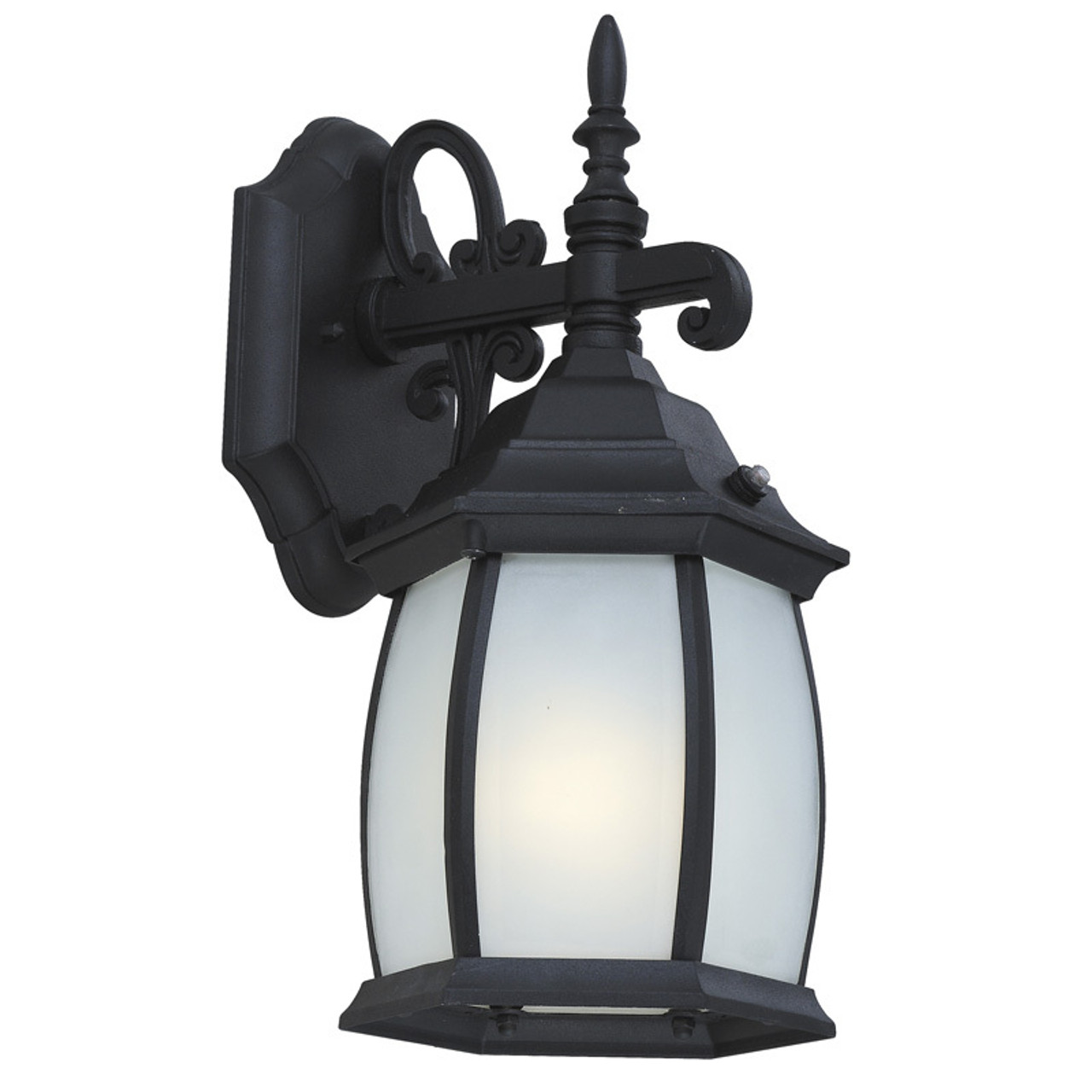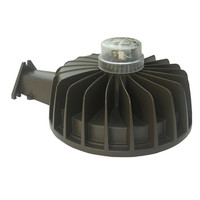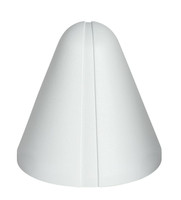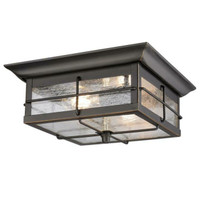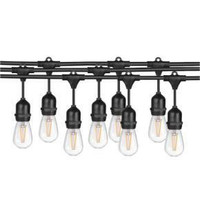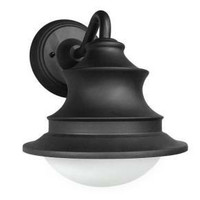-

-
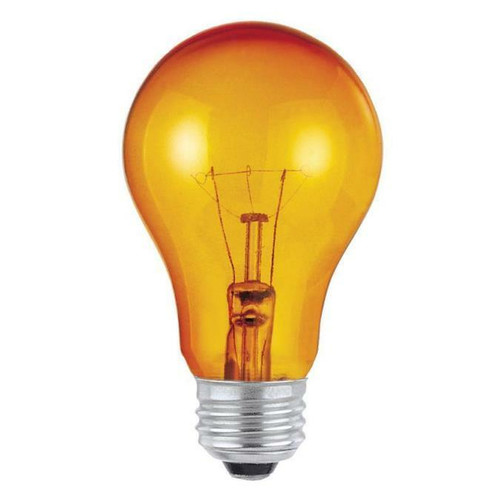
-
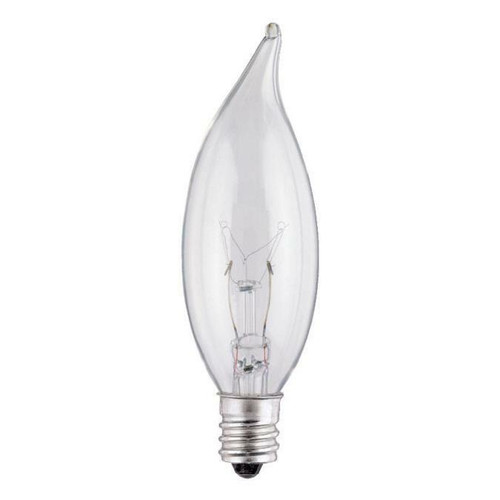
-

-

-

ASD Lighting
ASD Lighting ASD-LED-PCR-80N50-EX39 ASD LED Post Top Corn Bulb 80W 5000K
Add to Cart$69.04 -
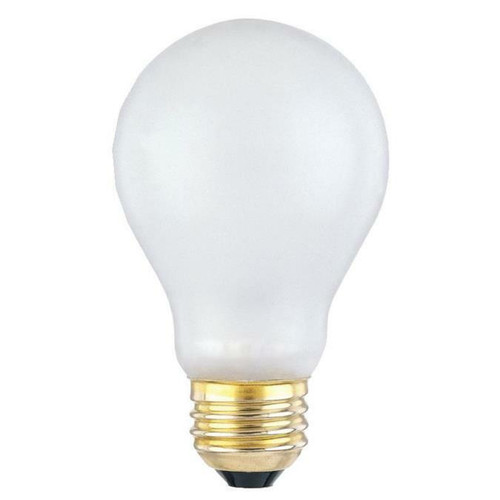
-

-

-

-

Sollos Landscape Lighting
Sollos Landscape Lighting PSH040-TZ-12 Textured Bronze Outdoor Light Fixture
Add to Cart$40.57 -

Path lighting is soft to moderately bright safety and landscape lighting designed to help you navigate walkways while attractively highlighting them. Install it on the ground along both sides of main walkways from the back door to your fence door, along stepping stones from the main walkway to a backyard feature like a fountain, and/or around flower beds to emphasize their contours.
Path lighting is often available in low-voltage (12- to 15-V) and solar LED options consisting of a decorative bulb housing unit attached to a short stake you drive into the ground. If you choose low-voltage path lights, you'll need to use a transformer to reduce the 120-volt house current to 12 volts; energy-saving solar versions, meanwhile, require no extra wires. Even if your walkways are shaded, these lights will stay bright for several hours after dusk, thanks to a solar rechargeable battery or remote solar panel you station somewhere else in the yard that gets direct sun.
3. String Lights
Look for waterproof, rechargeable, traditional battery-powered or solar-powered outdoor string lights (which usually come with a remote solar panel), preferably those with long-lasting LED bulbs. Such lights avoid the need for running extension cords across the yard, enable lighting in far corners of the yard without electrical outlets, and ensure that lights stay on safely even if spattered with rain.
4. Outdoor Wall Lighting
Outdoor residential wall lighting is low-voltage, moderately bright form of safety and accent lighting used chiefly to illuminate and improve navigation in small recessed areas of the yard where shadows lurk. You can mount them on any vertical surface, such as along the interior of your pergola; above stairways; and around sunken seating areas, pools, and other low-lying spots.
LED Wall sconces with an open-bottomed design (i.e., the bottom of the bulb housing is uncovered) are the best option because they cast the maximum amount of light down onto recessed areas. If you have scarce space on exterior walls, consider semi-flush-mount sconces (i.e., the light is attached to a narrow arm that mounts to a plate on the wall) instead of flush-mount sconces with the whole fixture up against the wall.
5. Lanterns
Lanterns offer soft, low-voltage accent lighting for a small expanse of an outdoor wall to play up architectural details or decor. They’re often installed in the vicinity of the back door to highlight a transom window, arch, or ornate wreath atop it. Most lanterns are semi-flush mount, consisting of a glass-and-metal exterior attached to an arm affixed to a plate on the wall. However, battery-powered tabletop lanterns bring that same visual interest to eye level while softly illuminating elements that you might reach for when outside entertaining: bowls of snacks, beverages, board games, and more. Choose lanterns with a translucent as opposed to a clear glass covering to provide diffuse, glare-free nighttime lighting that doesn’t distract from other backyard light fixtures.
6. Deck & Porch Lights
Deck & rear porch lighting is standard-voltage, moderate- to high-intensity lighting designed to help folks get up, down, and across the deck by night, avoiding tripping hazards and visual clutter, and also accentuate nearby garden or landscape features.
It’s installed as a series of LED lights recessed into grooves in the surface, so that you can safely walk over them, never even feeling them underfoot. Deck lights also belong around the perimeter of the deck surface, in between the individual steps of stairs, and/or along deck stair railings.
7. Spot Lighting
Also known as “up-lighting” or simply landscape lighting, spot lighting is standard-voltage landscaping lighting used to shine narrow, moderate- to high-intensity beams upwards, usually to showcase a plant or ornamental feature. You might install it at or above ground level below tall trees or a lawn ornament to make them look more statuesque.
To light taller objects, such as trees, opt for bullet-shaped lights on a base you drive into the ground with a stake. Bullet lights have an adjustable head that sits above ground and casts bright pins of light over longer distances at an angle of your choice. For shorter features, such as shrubs, try well lights, round lights that are pushed into the ground to cast light upwards over shorter distances. Because they’re hidden in the ground, they let small garden features take center stage.
Why are LED Lights Great for Outdoor Use?
Let’s take a look at some specific reasons why LEDs are ideal outdoor lights:
1. Bright, Clear Light
Many legacy outdoor lighting fixtures use metal-halide or mercury vapor lamps. Those bulbs start out creating a clear, white light, but over time, they can burn down to a visible orange or even pink color.
LEDs, on the other hand, produce a consistent, clear, white light (depending on the CCT). As long as the diode is receiving electricity, it creates strong light.
Some LEDs even allow you to manually adjust the color temperature of the light, creating warmer mood lighting or brighter safety lighting as needed.
2. Energy Efficiency
Outdoor incandescent or metal-halide lamps burn hot (you know that if you’ve ever tried to change a bulb too fast), and heat is the enemy of efficacy. Hot lights put additional strain on wiring and circuits which burns out the filaments, creating unnecessary replacement costs and wasted energy.
LED technology transforms electricity directly into light using a semiconductor, which means there’s no waste heat created and nearly every watt of energy you put into that lamp is being used to create light.
3. Reduced Cost of Ownership
LED efficacy means you can create the same number of lumens (light) using much less wattage (drawn energy). That directly translates to savings on your monthly utility bill.
As we’ve said, LEDs run cool, so they don’t “burn” themselves out, which means you’ll significantly reduce the frequency of maintenance and replacement by switching to LEDs.
4. Variety of Styles
LEDs are increasingly available in a variety of different shapes and forms to meet both practical and decorative outdoor lightning needs. Let’s dive into some of the possibilities.
What Kinds of LED Lights Are Usually Used Outdoors?
A wide array of reliable, efficient outdoor LED lights are available on the market for commercial and residential applications. Let’s take a look at some of the most popular choices one at a time.
Commercial Outdoor LED Lights
Shoeboxes
LED shoeboxes are attached to light poles or the sides of buildings to provide light below. They are most commonly used in parking lots, office parks, and public spaces to create a safe, visible environment. Browse our Shoeboxes here.
Wall Packs
LED wall packs are bright, compact lights that attach directly to the sides of houses, offices, schools, and other buildings. Wall packs can be angled downward (as they might be above a garage or loading dock door) or faced outward (as they might be on a porch or entryway). See the many varieties of Wall Packs here.
Flood Lights
LED flood lights are designed to light the place up, delivering a bright, wide area of light from above. Flood lights are the gold standard for security and safety, as they provide maximum lumens at night. Flood lights can be driven by solar energy and be activated by motion sensors, making them even more energy-efficient.
Residential Outdoor LED Lights
String Lights
As their name implies, LED string lights are small individual lights strung together on a line. String lights pack a lot of light and personality into any space are extremely popular for decorating patios, fire pits, grill areas, porches, and so on. See our String Lights here!
Pathway Lights
LED pathway lights generally rest on or are stuck down into the ground to provide safe walking across landscapes, lawns, down outdoor paths, across driveways, and so on. Pathway lights are perfect for bringing an upscale look to your yard and improving safety without breaking the bank.
Bollards
An LED bollard is a decorative pillar or post that contains an LED lamp. Bollards are essentially like larger, more permanent pathway lights. They’re ideal for walkways or residential parking areas that are frequently used at night and require clear, striking lighting.
Bulbs
Bulbs can many times be used outdoors if covered and kept away from direct exposure to changin weather conditions. If you’re not looking to buy all new outdoor lighting fixtures, you can install energy efficient LED lightbulbs into your existing fixtures, just like you would a standard bulb, and reap many of the reliable, cost-cutting benefits of LED technology. Browse our large inventory of LED bulbs here.
What to Look for When Buying Outdoor Lights
Dawn-to-Dusk Functionality
One of the best ways to maximize your savings with LED lights is to make sure they stay off when you don’t need them. Dawn-to-dusk functionality uses a photocell to detect the presence of sunlight and keep your lamp switched off until the sun is down. If you’re looking to make the most of your outdoor LED investment, dawn-to-dusk lights are the way to go.
IP Rating
The IP rating is a two-digit number that represents a lamp’s resistance to dust and water. That might not mean a lot for indoor lights, but it’s absolutely essentially when it comes to shopping for outdoor LEDs.
The first digit of the IP rating represents resistance to dust, with 6 being the best. If you’re hoping to keep your LED bright and running smoothly for years to come, you want the first digit in your IP rating to be a 6, which will prevent dirt and dust from dimming your light or interfering with your circuitry.
The second digit of your IP rating represents resistance to water, with 8 being the best. Your outdoor LED light should have a score of at least 5 to prevent rain and elements from infiltrating your lamp; however, a score of 6 is required if you’ll be cleaning the area around the lamp with a power washer.
The short answer: rugged outdoor LEDs should have an IP rating of 65 or 66.
UL Safety Certification
The Underwriters Laboratories (UL) certification is the gold standard for safety and efficiency in lighting. Any LED lamp or bulb bearing their logo has been through rigorous testing to guarantee its functionality, safety for human use, and great quality . Before you purchase any lights, check the package for the distinctive UL logo.
LEDs are perfect for residential, commercial, and industrial outdoor lighting applications because they reliably deliver the lumens people need to stay safe and do great work while also creating new opportunities through energy efficiency and reduced long-term cost of ownership. Whether you’re looking for functional security or decorative lighting, LED is the way to go.
Landscape Lighting for Homes & Residences
Landscape lighting or garden lighting refers to the use of outdoor illumination of private gardens and public landscapes; for the enhancement and purposes of safety, nighttime aesthetics, accessibility, security, recreation and sports, and social and event uses.
There are a lot of types landscape of lights and a lot of spaces to place them - it can easily be overwhelming with all the options out there, and it can be hard to find a place to start. One of the best things that you can do to scope out your own project it to grab a good, high-powered flashlight with a dimming optic and get out into your yard at night. Then, play with the light. See what looks cool, or what might not work as well.
Styling your Lawn's Landscape Lighting
The right outdoor lighting can boost home security, increase safety when walking around at night, and allow you to enjoy your outdoor spaces long after the sun sets. For the best landscape lighting, plan to incorporate a variety of fixtures and lighting types. Different exterior features, such as trees or shrubs, pathways, and architectural details, are best suited for certain outdoor light fixtures. Consider using a combination of spotlights, underground well lights, wide-angled floodlights, and pathway lighting to illuminate your home and landscaping at night. When choosing outdoor light fixtures, consider the power source and bulb type that best fits your lighting needs.
For long-lasting, energy-efficient landscape lights, first look for fixtures that use LED (light-emitting diode) bulbs, which are both long-lasting and consume less energy than CFL bulbs. Another option is solar landscape lights that use the sun's rays and a rechargeable battery for power, which makes for easy setup and eco-friendly energy use. However, note that these fixtures require direct sunlight during the day to recharge and don't offer as much illumination as wired landscape lighting. For increased brightness (or areas where the sun doesn't shine directly), low-voltage landscape lighting provides another energy-efficient option with DIY installation. This type of outdoor lighting connects to a transformer through wires, which can be buried underground or sit on top of the soil. Because of the low voltage (12 volts compared to your home's usual 120-volt system), these lights have a low risk of electrical shock and require less energy to run.
Types of Landscape Lighting
Now that you know what you want to light, how will you actually do it? There are a few basic types of fixtures that you want to get familiar with when you are making your lighting plan. Below are the various types of lighting you might find in a landscape:
Flood Lights & Spotlights
The difference between a spotlight and floodlight comes down to beam spread. Spotlights project a concentrated, narrow beam of light that's usually around 45 degrees. It's easier to aim and adjust so that if you're looking to highlight specific display points, like architectural details or landscape features, a spotlight will be your best choice.
Floodlights generally have a wider beam spread, up to 120 degrees. If you're looking to cast light over general areas like a driveway or lot, use a floodlight. It's better for overall safety and visibility.
In-Ground Lights
An in-ground light, or well light, is typically a circle-shaped fixture that installs directly into the ground, and is often used to illuminate walkways and driveways. In-grounds really heighten the sophistication and visibility of the features in your yard. It helps create drama and atmosphere with an uplight effect that illuminates the whole of a tree or structure. It also silhouettes the characters that stand around the yard; those you wouldn't be able to see on a typical night. They're best mixed with spotlights, if and when you can blend them, but uplighting on its own can be a strong lighting solution.
Since in-ground lights are hidden in the ground, the actual light effect is what stands out. In the case of an in-ground, make sure it's used to light up a strong presence on your yard. Don't worry about garden gnomes or short flowerbeds; concentrate on trees and garden walls.
Outdoor Post Lights
Post lights (and their robust cousins, bollard lights) help accent the pathway to your home and set an ambient tone without the overpowering brightness of floodlights. Tall posts are great for illuminating driveways and long stretches of space that get lost in the dark. Shorter posts work well for paths and small alcoves.
Path Lighting
Path lights are a basic outdoor fixture all yards should have. Similar to post lights in that they create light markers that run down a line, path lights are shorter and smaller in comparison. Path lights easily improve curb appeal and, of course, make walking along paths safer.
What are the different styles of pathway lights?
There are several varieties of fixtures effective for lining and lighting walkways. The most common types put to work on pathways are garden lights, downlights, bollard lights, and flush lights.
Garden Lights
Topped with a canopy that reflects light down onto adjacent paths and garden beds, garden lights typically stand between 18 and 24 inches tall.
Downlights
Directionally focused downlights affixed to a pole, wall, or adjacent tree offer effective pathway lighting. The spot design provides a targeted light source with little side glare. The farther away from a path, the larger the area of illumination.
Bollard Lights
Bollard (or pillar) lights have a 360-degree light spread and can illuminate garden beds and walkways simultaneously. Because they are a brighter light source, they are often placed at the start or end of a path as a focal point and to draw walkers in the right direction. Be careful of glare. Consider low-wattage bulbs or bollards with a solid top, to prevent the light from shining upwards.
Top-Rated Residential Landscape Lighting Distributor & Supplier
Lightingandsupplies.com is a lighting distributor of Indoor & Outdoor Commercial and Residential light fixtures and light bulbs. Based in the US, we carry the top LED lighting brands like EiKO, RAB Lighting, MaxLite, naturaLED, Westgate Lighting and more of the Top Lighting Manufacturers in the United States. We also carry a wide variety of Horticulture products by Hydrofarm, along with ceiling fans by RP Lighting+Fans. Lightingandsupplies.com also provides rebate programs, expert lighting design advice, and lighting audits for large projects. As a wholesaler, authorized dealer and bulk distributor of lighting products, we take pride in our customer-focused 100% satisfaction guarantee and return policy.
For more information, call 888-325-4448 or email: [email protected].

